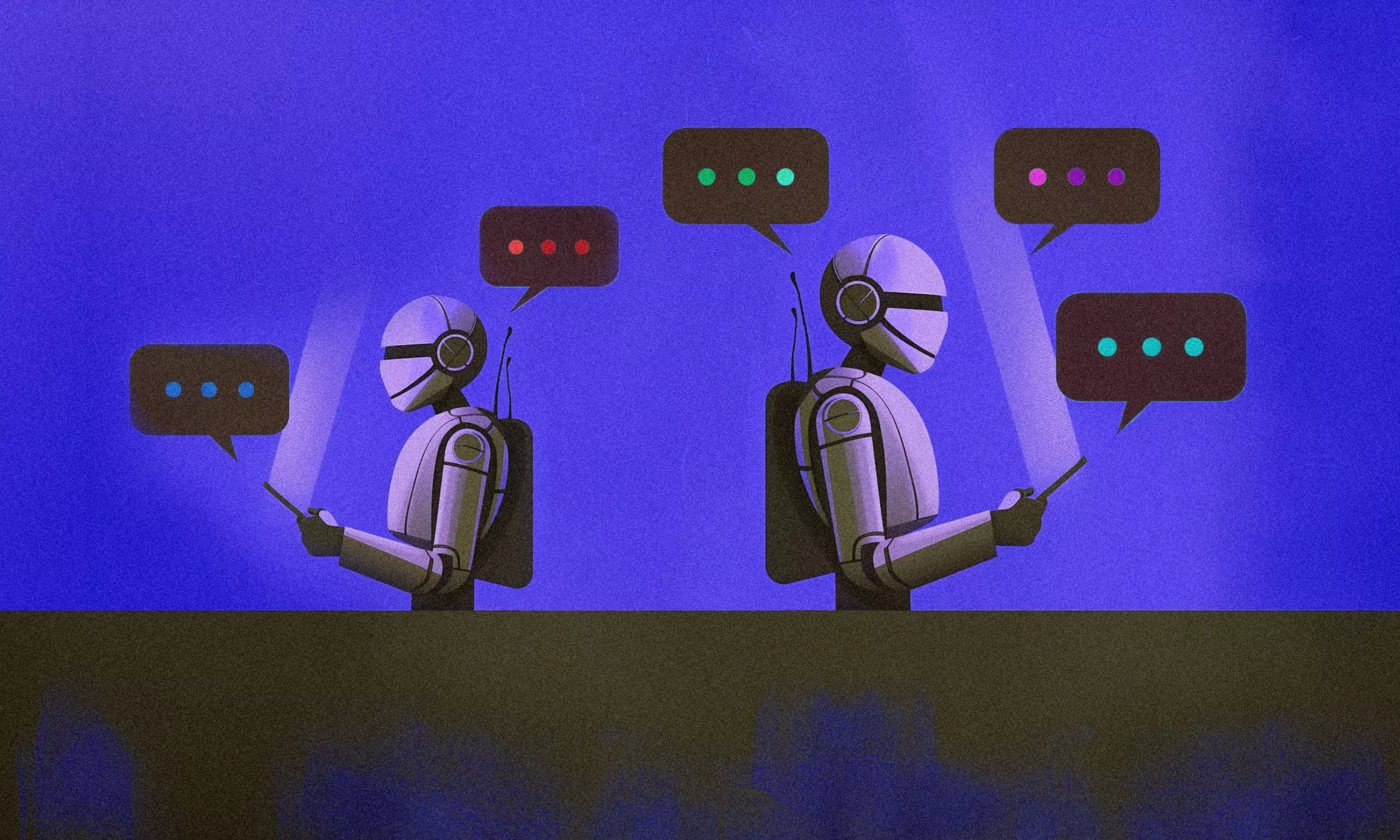AI-powered chatbots can be a great asset for any business, but are they really the low-hanging fruit everyone envisions? We uncover the typical challenges in AI chatbot development and provide ways to solve them.
With the dawn of artificial intelligence and machine learning, virtual assistants seem like an easy win that can boost customer engagement, lower costs, and increase conversion rate and revenue. All it takes is a knowledge base and a way for an AI-powered chatbot to interact with your customers verbally.
For instance, Bank of America’s chatbot Erica, which uses machine learning to refine its outputs, has had more than 1.5 billion (yes, billion with a “b”) interactions with bank customers. Think of all the time saved for human agents in customer service.
The chatbots are here, and AI chatbot development seems deceptively easy. After all, we’ve all seen ChatGPT, Bard, Claude, and other large language models in action. How hard could it be? The chatbot technology is already out there, isn’t it?
The language models mentioned can be used as a foundation for your virtual assistant, but keep in mind that they are general-purpose. If you’re building an AI-powered chatbot from scratch, you want it to cater to your business’s unique needs and provide more value in user interaction.
In this article, we tackle three unexpected pain points likely to surface during AI chatbot development.
Why AI chatbot development is similar to a Tesla
For better or worse, chatbots are digital products. As with any other such product, you’ll need to design, develop, and test them, ensuring that user interaction is seamless and effective.
Traditional chatbots were often rule-based chatbots. When a user steered away from the script, they’d get something like, “Sorry, can’t understand you. Here are some common things people ask.”
It was simple: A→B. If the user input wasn’t A or something very similar to it, the rule-based chatbot could not help them. Not the best user experience, you’ll agree.
In the ChatGPT era, a chatbot is actually conversational AI. It digests the knowledge base you feed it. It can understand human language and provide complex customer queries without scripting. It just “knows” what to say.
Since we’re focusing on the product side of things, we won’t go into the tech details of natural language processing or what it even means for these intelligent chatbots to “know” anything. It suffices to say that conversational AI is to rule-based chatbots what Tesla is to a horse carriage – similar in concept but very different when you use one.
No shortcuts in the AI chatbot development process
Now, is it simple to make a Tesla? You intuitively know it takes a number of engineers and experts to build it. The same applies to AI-powered chatbots, especially those that incorporate deep learning. You’ll need a BTYI team.
BTYI? Bigger than you’d imagine.
The AI chatbot development process is complex. You’ll need a product manager who understands the domain well, a chatbot copywriter/designer, a knowledge base manager, engineers who specialize in large language models, AI testers, front and backend devs, and probably some DevOps and SecOps people to ensure AI is accessing your internal systems securely.
Hardly a small and scrappy bunch. More like your regular setup for a digital product.
Of course, you can speed things up by engaging with partners. Maybe similar to the one whose blog you’re reading right now and who seems knowledgeable about natural language processing? If this little nudge moved the needle with you, you can get a free assessment of your AI readiness here.
Pain point #1: Scoping is a delicate balance
Here’s the first dilemma your product team will likely encounter: how knowledgeable should your virtual assistant be? Are you aiming for a know-it-all generalist or a specialized expert for individual aspects of your service? Both approaches come with certain trade-offs in terms of user experience.
Your first instinct will likely be to take the “buffet approach.” You’ll want to take full advantage of machine learning and let your AI chatbot ingest all the manuals, internal documents, and other information about your services. Your intelligent chatbot will be in the know about many topics related to your company but the master of none. It will also completely ignore an important aspect called user intent.
People don’t ask chatbots questions like “What prepaid plans do you have?” They ask about their own situation: “How do I transfer my kid to a prepaid plan if they’re at another telecom?” “Can I get a discount because my company is also your customer?”
Covering specific use cases or aspects of your service takes time. You need to gather info from stakeholders and subject matter experts, prepare and ingest the knowledge base, set up integrations to your system, and test the bot’s performance. Natural language understanding only goes so far, and unless you have infinite time, you can’t cover all the complex queries in-depth.
On the other hand, if you limit the virtual assistant to addressing only a handful of specific question categories, you’ll limit its usefulness. It’ll be seen as a gimmick on your site, not a digital helper.
The trade-off here is that you either go with a general chatbot, which covers more users but offers lower usefulness on average, or a custom chatbot specialized for a few use cases, which covers fewer users but offers more value to them.
What to do?
Start with a user journey and identify touchpoints where an intelligent chatbot could provide the most value to most people. Focus on those use cases first, and don’t go too wide. You need to be able to show business results quickly. Focusing on high-value and high-reach use cases ensures just that.
Pain point #2: Testing a chatbot is a labyrinth
Like with any digital product, you don’t want your users to interact with a half-baked creation. It’s bad for retention, bad for public perception, and ultimately bad for your revenue. Therefore, you’ll need to test your chatbot to make sure it provides accurate responses, maintaining a high standard of user experience.
However, there’s a catch.
Chatbot technology is probabilistic, which is a fancy way of saying that you might get a different answer for the same question. Sometimes, the difference is slight. Sometimes, it’s huge. And sometimes, the chatbot makes stuff up, i.e., hallucinates.
When natural language processing enters the equation, you’re testing in a minefield.
Picture this situation. An AI tester red flags an answer during testing. Maybe your advanced chatbot mentions an unexisting product that looks like something your company might offer. For instance, the Ryanair chatbot offers users “priority in-flight toilet access.” It wouldn’t be too crazy to imagine Ryanair doing that, right?
Other team members try to recreate the issue. No dice. Your whole team ends up chasing something that never happens again. There’s still a worm of doubt in your mind, but if you can’t find it, you can’t fix it.
The never-happening-again issue is one side of the problem.
The other one is that everything might go swell during testing. Your team tests out multiple prompts. Each time, they get an instant response that makes sense and follows your brand’s tone of voice. AI engineers see a high precision in understanding the prompt. Backend and DevOps track the chatbot accessing other systems as expected.
Success! The update is shipped, shoulders are pat, champagne is opened.
And then, your social media team pings you about that priority toilet access.
The chatbot just offered it to someone. You scramble in disbelief to check the chat logs. There it is. You see it in black and white: your chatbot asking users if they’d like to add priority in-flight toilet access.
What happened? Nothing much. The AI chatbot is probabilistic; these things happen if you don’t set up an explicit guardrail against it.
What to do?
Set a clear tone of voice and content restrictions for your chatbot (like “don’t give banking advice”). In AI chatbot development, you need to set rules for self-check – AI chatbots can generate a new answer if the current one isn’t aligned with what you prescribed. And always check chat logs. They’ll allow you to catch bugs but also inspire new features.
Pain point #3: It’s easy to over-buttonize your chatbot
We’re still learning how people interact with AI chatbots. During this trial and error period, most product teams fall back to the general best practices of user experience. The first one is: make it easy for people to interact with your product.
For instance, typing takes longer than tapping or clicking a button. So, you’d want to add a few buttons to your chatbot to help guide people and support the conversational flow.
On top of that, you already have an app navigation or a sitemap. The button options will seem to come up by themselves: common questions about house insurance, coverage info, coverage exceptions, pricing, and applying for insurance. Easy peasy.
Adding too many pre-set topics defeats the chatbot’s whole purpose. It’s conversational AI, and the interaction should mimic a human conversation. People should enjoy the flow, not tap or click buttons.
By using too many buttons, you limit user interactions. People tap around your chatbot crammed into a tiny pop-up window while they should be navigating your beautifully designed and optimized website. It’s a lose-lose situation.
What to do?
Have a few buttons on the welcome screen to help people get started. But keep buttons to a minimum on other chatbot answers, at zero if possible. Resist the urge to mimic your sitemap. Interacting with the AI chatbot should be different than interacting with your website.
AI chatbot, your most valuable player?
The business benefits of AI chatbot development are real: lower costs and time-to-service, boosted sales and customer satisfaction. The AI-powered chatbot is a powerful tool that can do wonders for your competitive edge.
And the race is on. You’ve seen giants like Bank of America moving into this space. Also, OpenAI has recently launched its own “app store”, making it easier for developers to use ChatGPT’s language model as the foundation for AI chatbots. With all these developments in the domain, if you’re not running, you’re falling behind.
A chatbot may be low-hanging fruit, but a chatbot experience that brings value to users and your business is not. Here, there are no cookie-cutter solutions. An AI chatbot can be a star player among your touchpoints with customers and users, but you must treat it as such – invest the appropriate time and effort so it can help you reach your business goals.
If you want to utilize artificial intelligence but don’t know where to start, we can help you discover the right use case and build your solution. Find out more here.











